Abstract
Tuberculosis (TB) is a rapidly growing problem among injecting drug users (IDU), especially those infected with human immunodeficiency virus. The authors review IDUs' responses to current TB control strategies and discuss the implications of their findings for the proposed implementation of directly observed therapy (DOT), a method for ensuring that patients take prescribed medication. Field workers carried out 210 ethnographic interviews with 68 IDUs in a Brooklyn, NY, community during 1990-93. Case studies suggested that many IDUs are uninformed about TB and often misinformed about their personal TB status. Ethnographic interviews and observations indicated that the threat of TB-related involuntary detainment may lead IDUs to avoid TB diagnostic procedures, treatment for TB, or drug abuse treatment, and to avoid AIDS outreach workers and other health-related services. IDUs who tested positive for the purified protein derivative (PPD) of TB sometimes have left hospitals before definitive diagnoses were made, because of a perceived lack of respectful treatment, fear of detention, or lack of adequate methadone therapy to relieve the symptoms of withdrawal from drugs. Current TB diagnosis and treatment systems are, at best, inadequate. The threat of TB-related detention discourages some IDUs from seeking any type of health care. There is an urgent need to educate IDUs about TB and to educate and sensitize health care providers about the lifestyles of IDUs. DOT may help in servicing this difficult-to-serve population, particularly if techniques are incorporated that have been developed for other successful public health interventions for IDUs.
Full text
PDF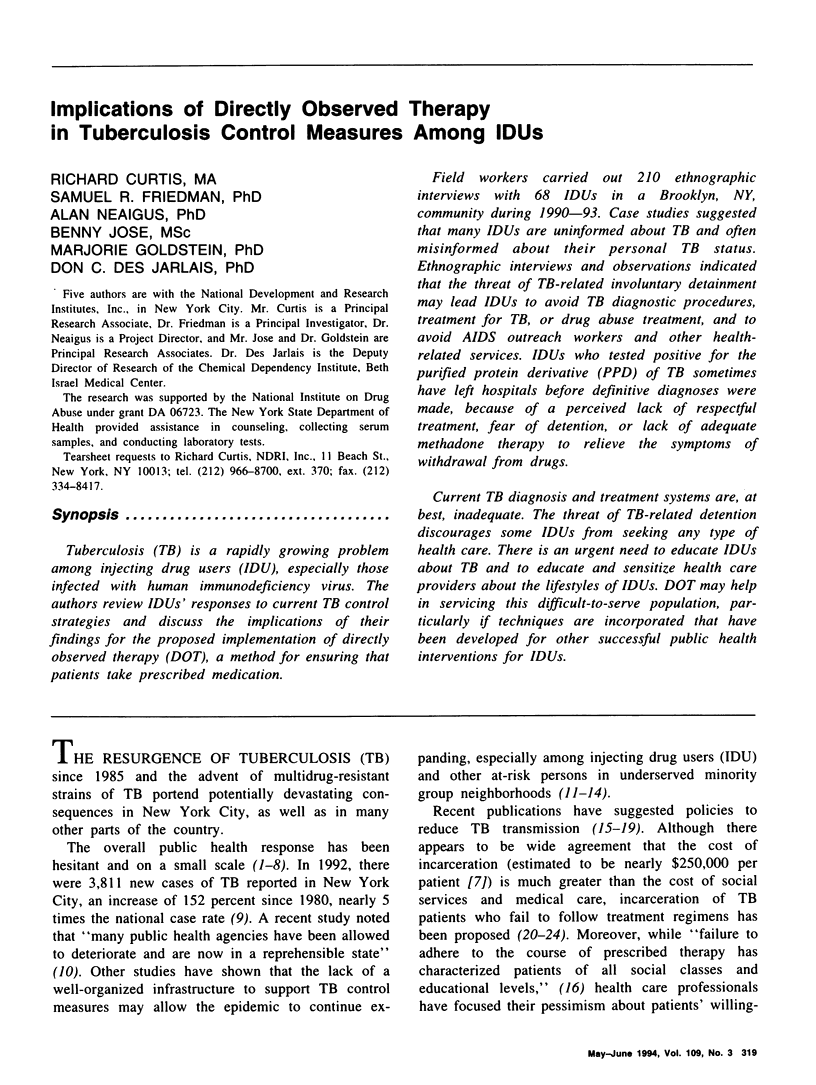
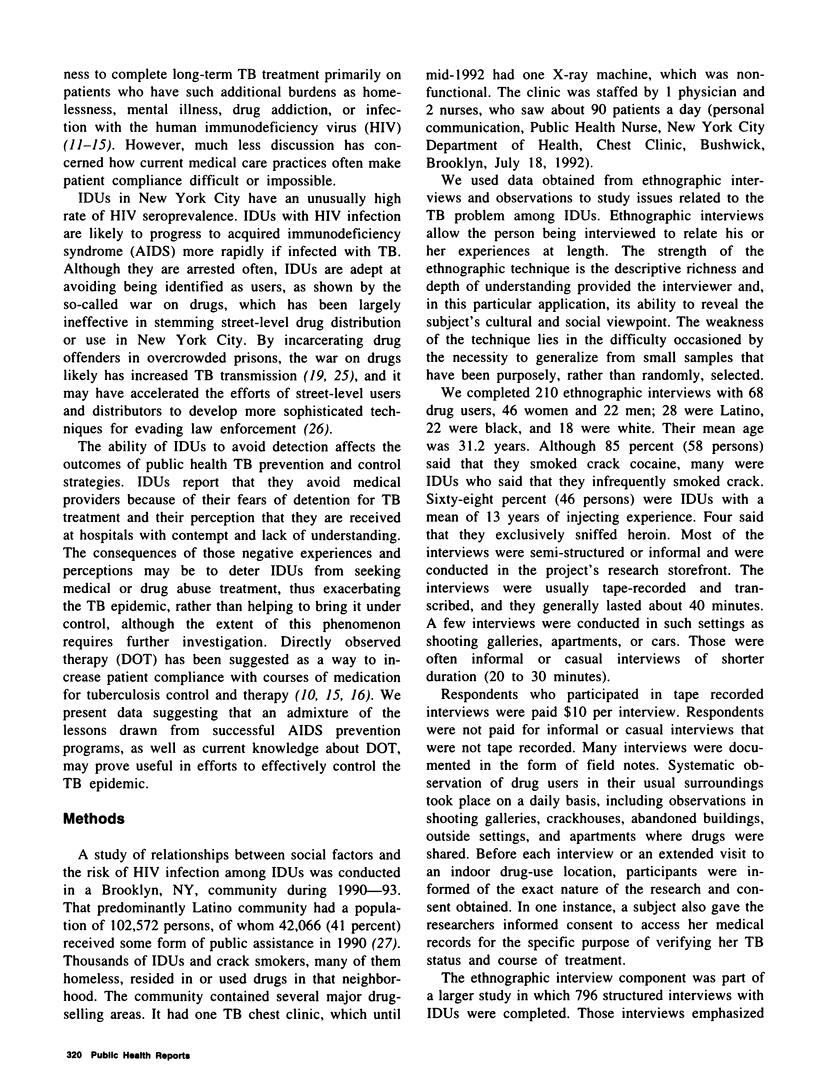
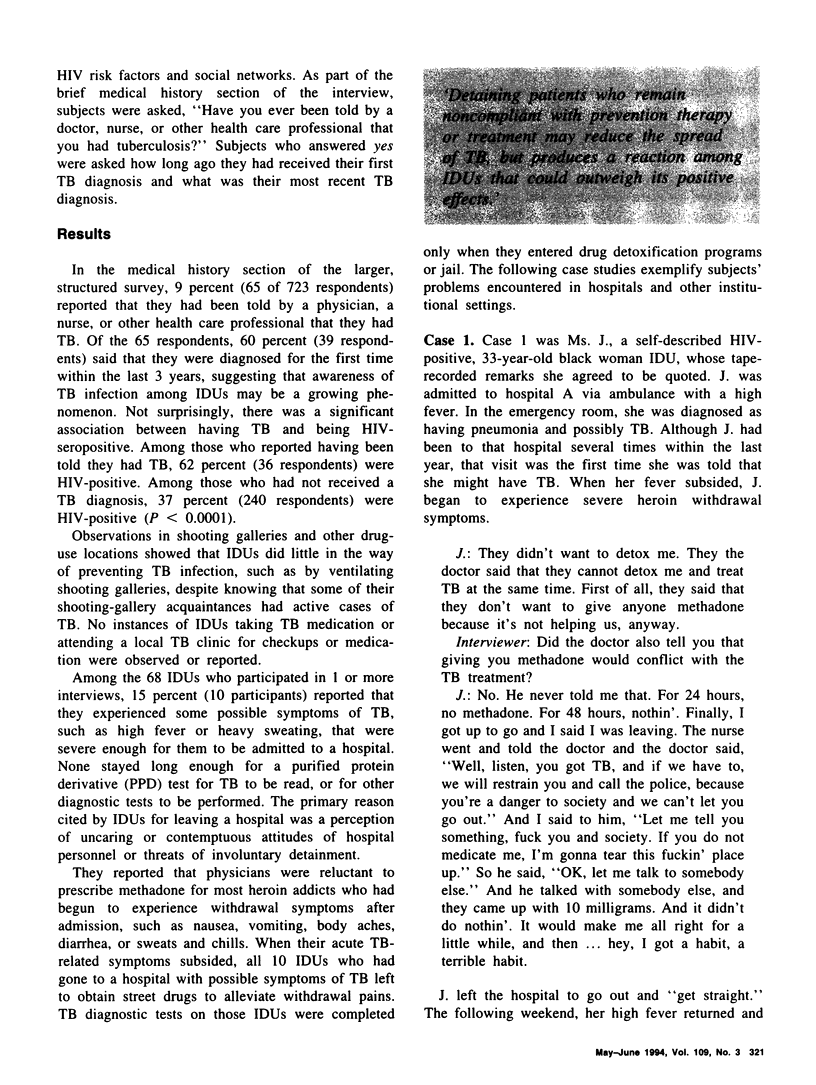
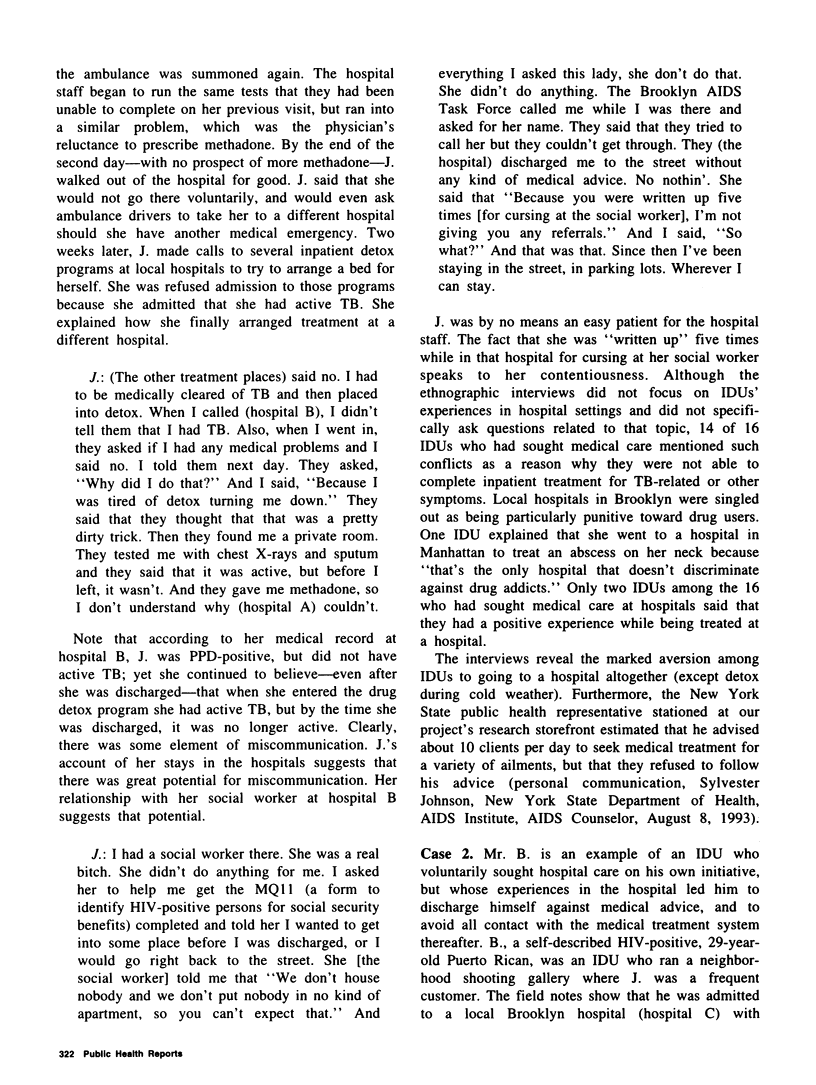
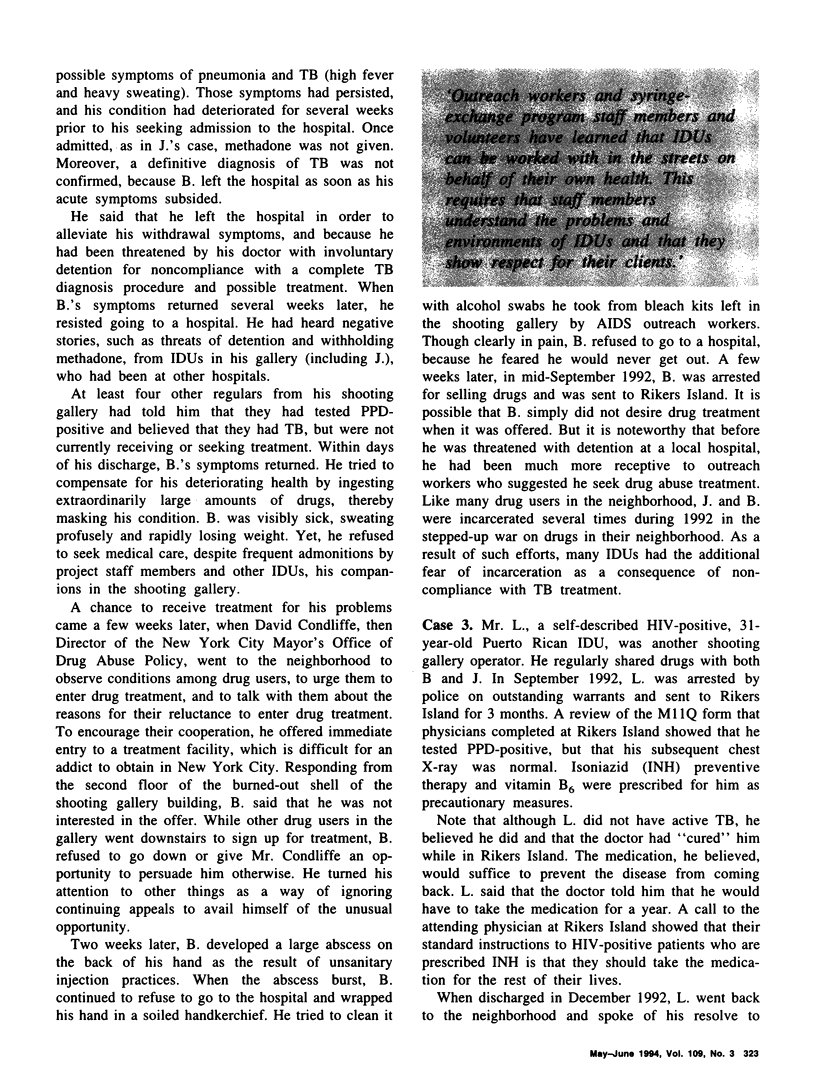
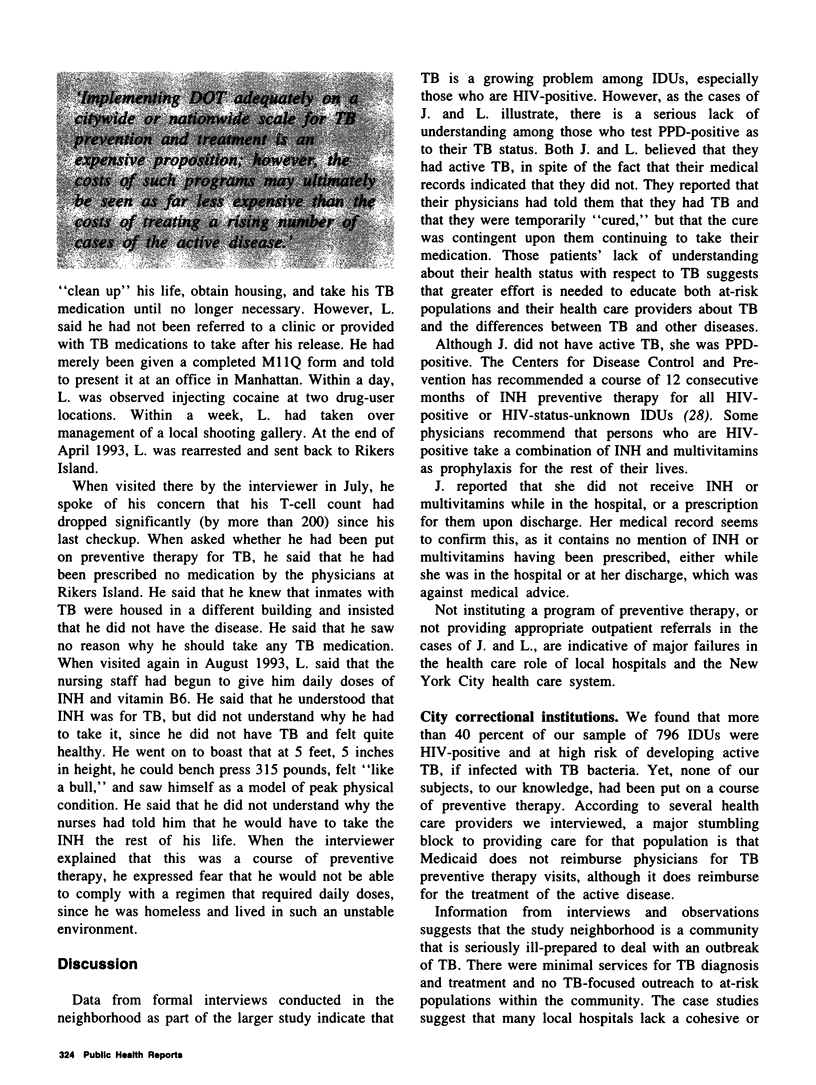
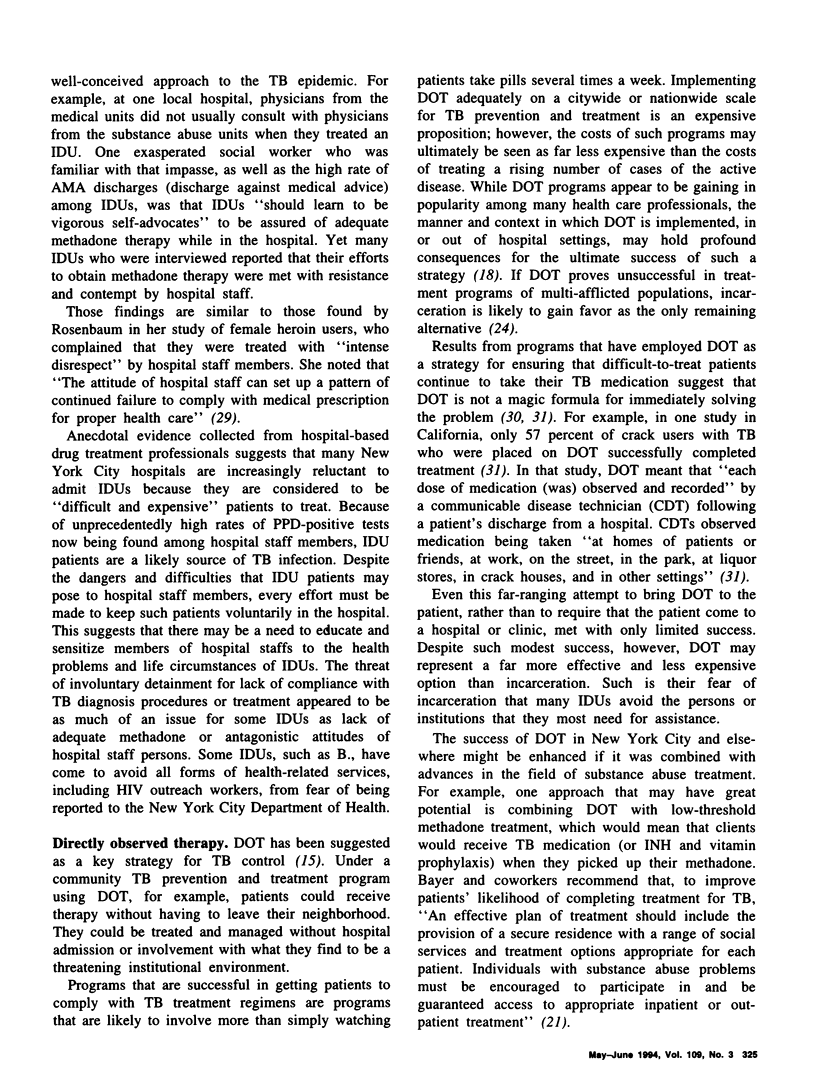
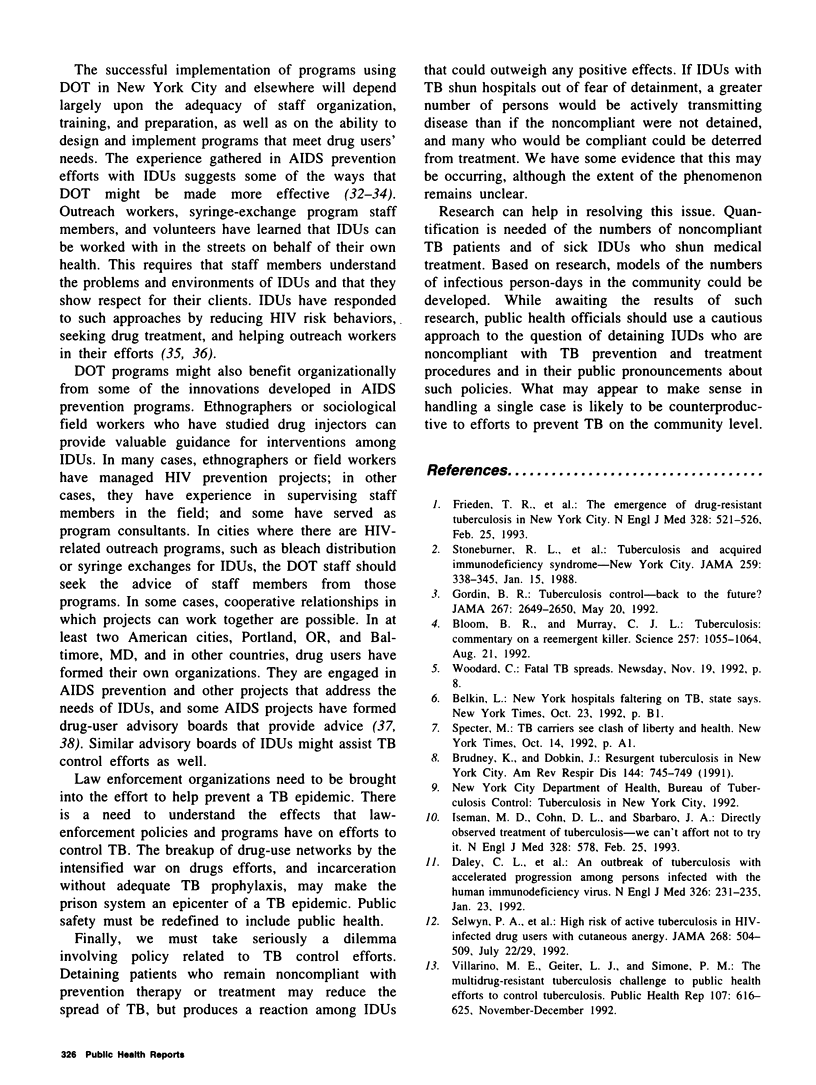
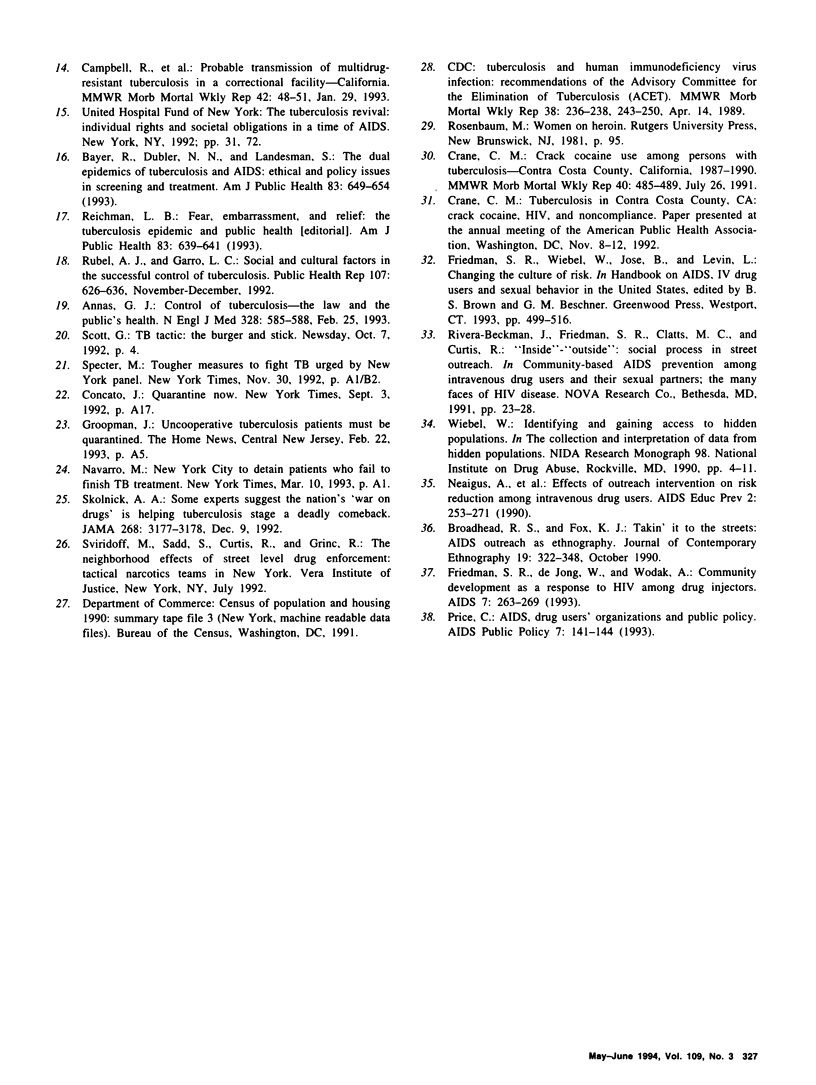
Selected References
These references are in PubMed. This may not be the complete list of references from this article.
- Annas G. J. Control of tuberculosis--the law and the public's health. N Engl J Med. 1993 Feb 25;328(8):585–588. doi: 10.1056/NEJM199302253280825. [DOI] [PubMed] [Google Scholar]
- Bayer R., Dubler N. N., Landesman S. The dual epidemics of tuberculosis and AIDS: ethical and policy issues in screening and treatment. Am J Public Health. 1993 May;83(5):649–654. doi: 10.2105/ajph.83.5.649. [DOI] [PMC free article] [PubMed] [Google Scholar]
- Bloom B. R., Murray C. J. Tuberculosis: commentary on a reemergent killer. Science. 1992 Aug 21;257(5073):1055–1064. doi: 10.1126/science.257.5073.1055. [DOI] [PubMed] [Google Scholar]
- Brudney K., Dobkin J. Resurgent tuberculosis in New York City. Human immunodeficiency virus, homelessness, and the decline of tuberculosis control programs. Am Rev Respir Dis. 1991 Oct;144(4):745–749. doi: 10.1164/ajrccm/144.4.745. [DOI] [PubMed] [Google Scholar]
- Daley C. L., Small P. M., Schecter G. F., Schoolnik G. K., McAdam R. A., Jacobs W. R., Jr, Hopewell P. C. An outbreak of tuberculosis with accelerated progression among persons infected with the human immunodeficiency virus. An analysis using restriction-fragment-length polymorphisms. N Engl J Med. 1992 Jan 23;326(4):231–235. doi: 10.1056/NEJM199201233260404. [DOI] [PubMed] [Google Scholar]
- Frieden T. R., Sterling T., Pablos-Mendez A., Kilburn J. O., Cauthen G. M., Dooley S. W. The emergence of drug-resistant tuberculosis in New York City. N Engl J Med. 1993 Feb 25;328(8):521–526. doi: 10.1056/NEJM199302253280801. [DOI] [PubMed] [Google Scholar]
- Gordin F. Tuberculosis control. Back to the future? JAMA. 1992 May 20;267(19):2649–2650. doi: 10.1001/jama.267.19.2649. [DOI] [PubMed] [Google Scholar]
- Iseman M. D., Cohn D. L., Sbarbaro J. A. Directly observed treatment of tuberculosis. We can't afford not to try it. N Engl J Med. 1993 Feb 25;328(8):576–578. doi: 10.1056/NEJM199302253280811. [DOI] [PubMed] [Google Scholar]
- Leads from the MMWR. Tuberculosis and acquired immunodeficiency syndrome--New York City. JAMA. 1988 Jan 15;259(3):338–345. [PubMed] [Google Scholar]
- Neaigus A., Sufian M., Friedman S. R., Goldsmith D. S., Stepherson B., Mota P., Pascal J., Des Jarlais D. C. Effects of outreach intervention on risk reduction among intravenous drug users. AIDS Educ Prev. 1990 Winter;2(4):253–271. [PubMed] [Google Scholar]
- Reichman L. B. Fear, embarrassment, and relief: the tuberculosis epidemic and public health. Am J Public Health. 1993 May;83(5):639–641. doi: 10.2105/ajph.83.5.639. [DOI] [PMC free article] [PubMed] [Google Scholar]
- Rubel A. J., Garro L. C. Social and cultural factors in the successful control of tuberculosis. Public Health Rep. 1992 Nov-Dec;107(6):626–636. [PMC free article] [PubMed] [Google Scholar]
- Selwyn P. A., Sckell B. M., Alcabes P., Friedland G. H., Klein R. S., Schoenbaum E. E. High risk of active tuberculosis in HIV-infected drug users with cutaneous anergy. JAMA. 1992 Jul 22;268(4):504–509. [PubMed] [Google Scholar]
- Skolnick A. A. Some experts suggest the nation's 'war on drugs' is helping tuberculosis stage a deadly comeback. JAMA. 1992 Dec 9;268(22):3177–3178. [PubMed] [Google Scholar]
- Villarino M. E., Geiter L. J., Simone P. M. The multidrug-resistant tuberculosis challenge to public health efforts to control tuberculosis. Public Health Rep. 1992 Nov-Dec;107(6):616–625. [PMC free article] [PubMed] [Google Scholar]


